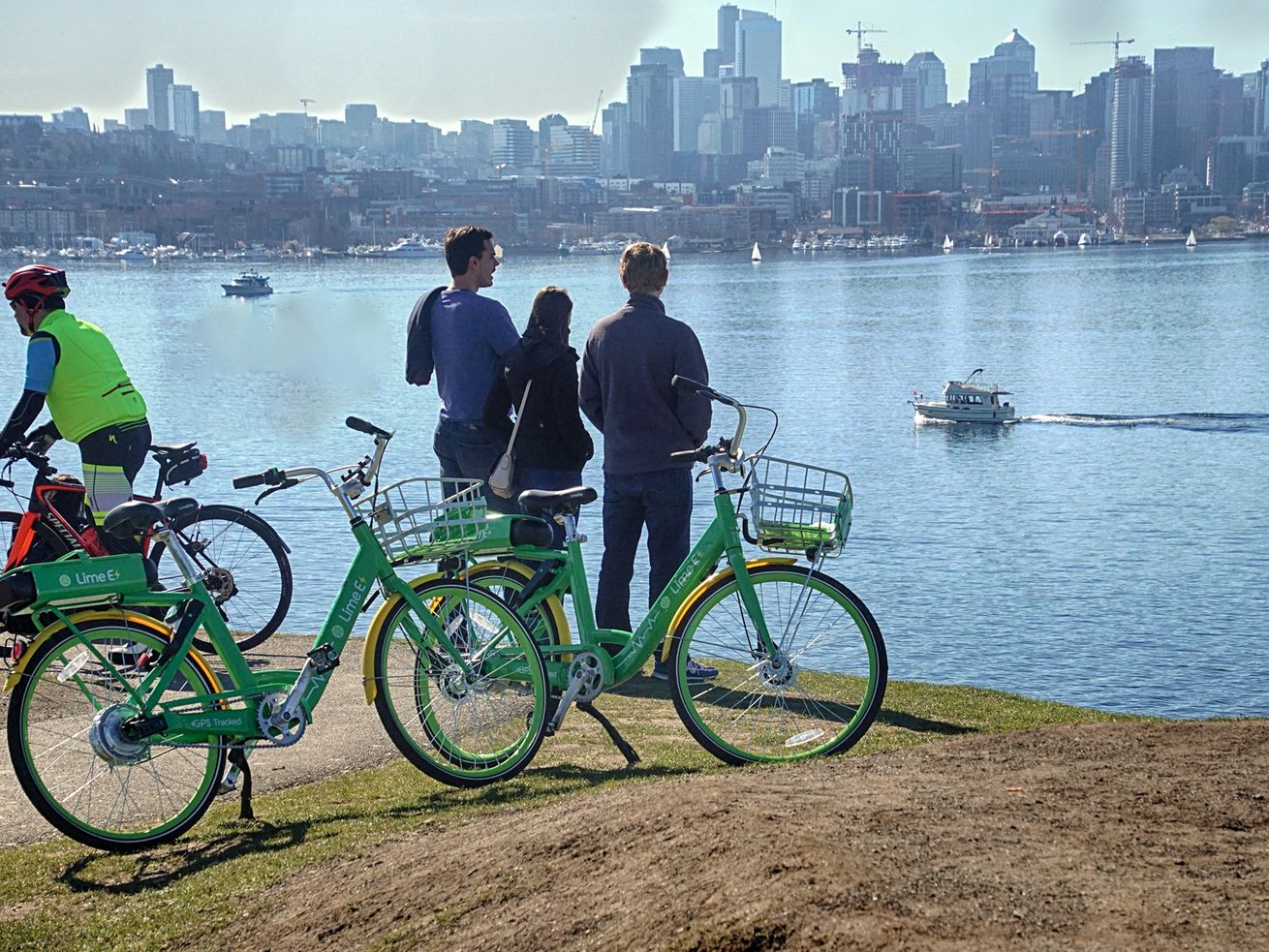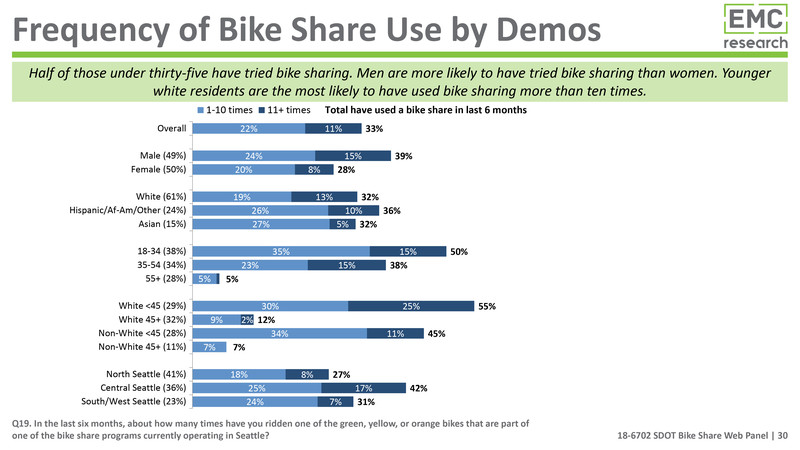
Dockless bike-share saw diverse ridership in 2017—with some exceptions—and very few accidents
This month, the Seattle Department of Transportation (SDOT) presented the first six months of data for Seattle’s experiment with dockless bike shares, which started about a year ago. The major takeaways: The programs, despite complaints of low helmet use, haven’t resulted in an increase in head injuries. People are using bike-shares not just for recreation, but for errands and transit connections. And ridership is diverse, with a few caveats.
Earlier this year, we reported that the city’s in kind of a holding pattern with dockless bike share—the pilot’s officially over, but existing operators are still operating under their individual contracts pending a more permanent program.
The first step toward developing the long-term program was the presentation to City Council, which gave an overview about what worked and what didn’t, with a combination of ridership data collected in collaboration with the University of Washington and a survey distributed to the public on opinion and use. The findings were analyzed with the firm EMC Research.
Overall, ridership is high, with 468,000 rides completed on 10,000 bikes in the first six months, much higher than our now-defunct docked system Pronto ever achieved (in fact, private bike share blew past Pronto’s lifetime ridership in about three months). Across racial demographics, consistently around a third of respondents had tried dockless bike share, although white people were more likely to be frequent riders. Ridership also skewed young and male, with young white men in particular being the most likely to use shared bikes. So while ridership is more diverse than expected—nationally, bike-share ridership tends to be white and wealthy—there’s still a ways to go.

Courtesy of SDOT
There’s also room for improvement in fitting a diversity of bodies. Around a quarter of respondents said that shared bikes don’t meet their size or physical needs.
The biggest complaint, though, shouldn’t be too much of a surprise: bikes knocked over, parked improperly, or taking up the right-of-way. Around two-thirds of survey respondents thought that was an issue, which ended up being the top-ranked drawback.
Even more data backs up the issue with parking, which SDOT has tried to address with a pilot program for designated parking spots. Back in December, the Portland Bureau of Transportation (PBOT) did its own study of Seattle’s bike share, and found that while 87 percent of bikes were parked correctly, 10 percent were blocking access to pedestrian movement.
Close behind in ranking, though, is something more cycling-positive: Bike-share users want more protected bike lanes to ride on, with more than half agreeing that there “aren’t enough bike trails or protected bike lanes where I want to go.” That tracks with the comfort level of surveyed Seattleites. 20 percent indicated that they “would only be comfortable riding a bicycle in Seattle on bike lanes and paths that are physically separated from motor vehicles,” with another quarter answering that they’re not comfortable biking in Seattle at all.
Weather factors into biking discomfort, too. A whopping 76 percent agreed that they’d only consider biking when it’s warmer and not as rainy.
While the warm-weather biking paints a picture of recreation, slightly more respondents actually used bike share for “utilitarian” reasons—errands, transit connections, getting from point A to point B—rather than simply recreational riding with no destination.
Maintenance, additionally, is a concern, although Seattleites are split on the issue. The PBOT study found that more than half of Seattle’s dockless bikes had a maintenance issue, with 17 percent unrideable. Meanwhile, just over 30 percent on either side agreed or disagreed that the bikes are not well-maintained.
And while some bike-share operators have attempted to address our hilly terrain, nearly 40 percent said that the bikes are too heavy for Seattle’s hills. (26 percent said the bikes are just fine.) It could be an indicator of a greater need for electric bikes; currently e-bikes are only operated in the city by Limebike, although an all-electric fleet by Jump is getting prepped to launch when regulations allow.
Many also complained that bike-share riders aren’t wearing helmets—62 percent indicated it as an issue, with only 18 percent disagreeing. That complaint, on its face, seems to have some merit, with only 24 percent of riders self-reporting wearing helmets. But despite that, only five collisions involving shared bikes have been reported, and a preliminary study by the University of Washington and Harborview found no increase in head injuries with bike share.
Overall, though, public perception of bike-share was positive, according to the survey. 74 percent had a favorable opinion. But the complaint line is significantly rougher, with 85 percent of comments received by email and phone being “unfavorable.”
Now that the data has been compiled, SDOT is preparing its final recommendations for legislation. Those will be presented to the City Council in mid-July.


